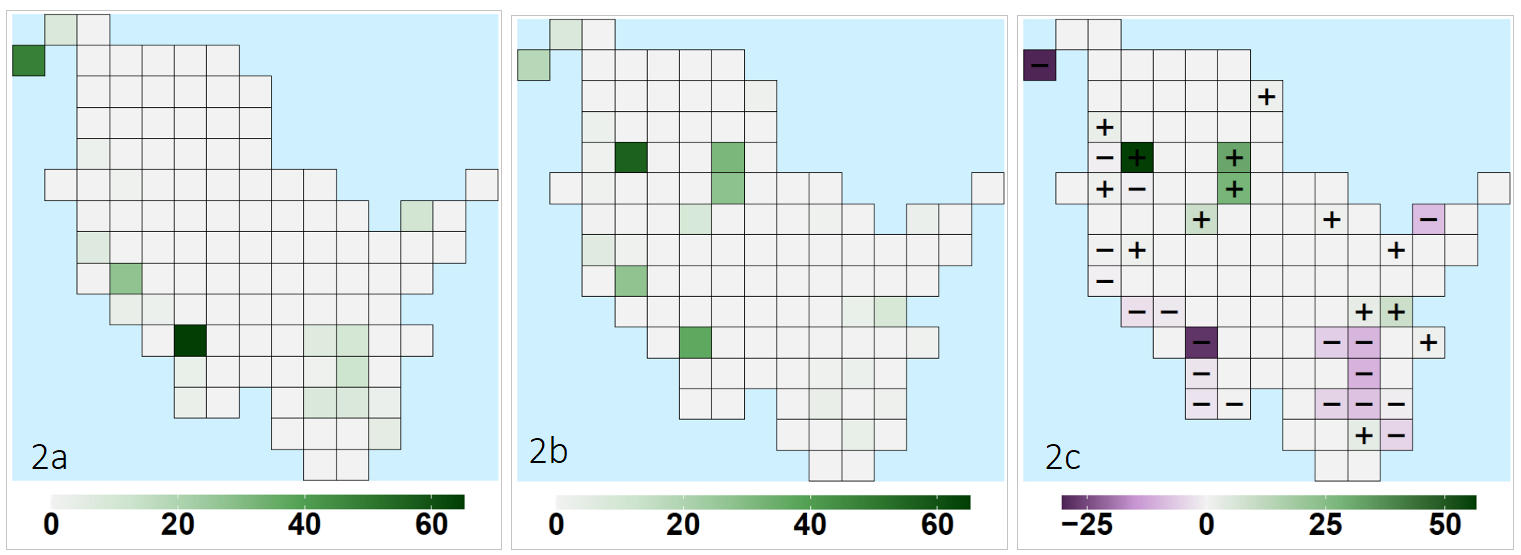Ecological-Economic Modelling
Most of the world's ecosystems are affected by human activities, be it indirectly e.g. through human-induced climate change or
directly e.g. through land clearing and harvesting of resources. The conservation of biodiversity and the maintenance of ecosystem services
therefore have an ecological as well as an economic dimension. Deriving strategies to conserve biodiversity and use the
resources of ecosystems in a sustainable manner requires the integrated consideration of both dimensions.
Ecological-economic Modelling is a useful method for the integration of ecology and economics.
At the Department of Ecological Modelling it is especially applied for the analysis of market-based biodiversity-conservation instruments,
such as conservation payments or conservation offsets. Another topic of our research includes the management of renewable resources.
Emphasis is laid on the spatial and temporal effects of policies, as well as the policies’ cost-effectiveness, i.e. their ability
to deliver desired conservation goals at least economic costs. A multitude of methods is used, such as spatial and dynamic modelling,
agent-based modelling, spatial and dynamic optimisation, uncertainty and sensitivity analyses.

Selected Publications
- Duan, Y., Zhou, S., Ning, J., Drechsler, M. (2024):
Introducing wetland offset markets under development-restoration conflicts: The role of public offset credit supply
J. Environ. Manage. 352 , art. 120125 10.1016/j.jenvman.2024.120125 - Reutter, F., Drechsler, M., Gawel, E., Lehmann, P. (2024):
Social costs of setback distances for onshore wind turbines: A model analysis applied to the German State of Saxony
Environ. Resour. Econ. 87 (2), 437 - 463 10.1007/s10640-023-00777-3 - Drechsler, M., Grimm, V. (2023):
Exploiting hysteresis in coordination incentives for cost-effective biodiversity conservation
Q Open 3 (2), qoad026 10.1093/qopen/qoad026 - Drechsler, M., Wätzold, F., Grimm, V. (2022):
The hitchhiker's guide to generic ecological-economic modelling of land-use-based biodiversity conservation policies
Ecol. Model. 465 , art. 109861 10.1016/j.ecolmodel.2021.109861 - Gerling, C., Drechsler, M., Keuler, K., Leins, J.A., Radtke, K., Schulz, B., Sturm, A., Wätzold, F. (2022):
Climate–ecological–economic modelling for the cost-effective spatiotemporal allocation of conservation measures in cultural landscapes facing climate change
Q Open 2 (1), qoac004 10.1093/qopen/qoac004 - Jäger, F., Rudnick, J., Lubell, M., Kraus, M., Müller, B. (2022):
Using Bayesian belief networks to investigate farmer behavior and policy interventions for improved nitrogen management
Environ. Manage. 69 (6), 1153 - 1166 10.1007/s00267-022-01635-6 - Bartkowski, B., Beckmann, M., Drechsler, M., Kaim, A., Liebelt, V., Müller, B., Witing, F., Strauch, M. (2020):
Aligning agent-based modeling with multi-objective land-ese allocation: Identification of policy gaps and feasible pathways to biophysically optimal landscapes
Front. Environ. Sci. 8 , art. 103 10.3389/fenvs.2020.00103 - Drechsler, M. (2020):
Ecological-economic modelling for biodiversity conservation
Cambridge University Press, Cambridge, 297 pp. 10.1017/9781108662963 - Drechsler, M. (2020):
Model-based integration of ecology and socio-economics for the management of biodiversity and ecosystem services: State of the art, diversity and current trends
Environ. Modell. Softw. 134 , art. 104892 10.1016/j.envsoft.2020.104892 - Müller, B., Hoffmann, F., Heckelei, T., Müller, C., Hertel, T.W., Polhill, J.G., van Wijk, M., Achterbosch, T., Alexander, P., Brown, C., Kreuer, D., Ewert, F., Ge, J., Millington, J.D.A., Seppelt, R., Verburg, P.H., Webber, H. (2020):
Modelling food security: Bridging the gap between the micro and the macro scale
Glob. Environ. Change 63 , art. 102085 10.1016/j.gloenvcha.2020.102085
